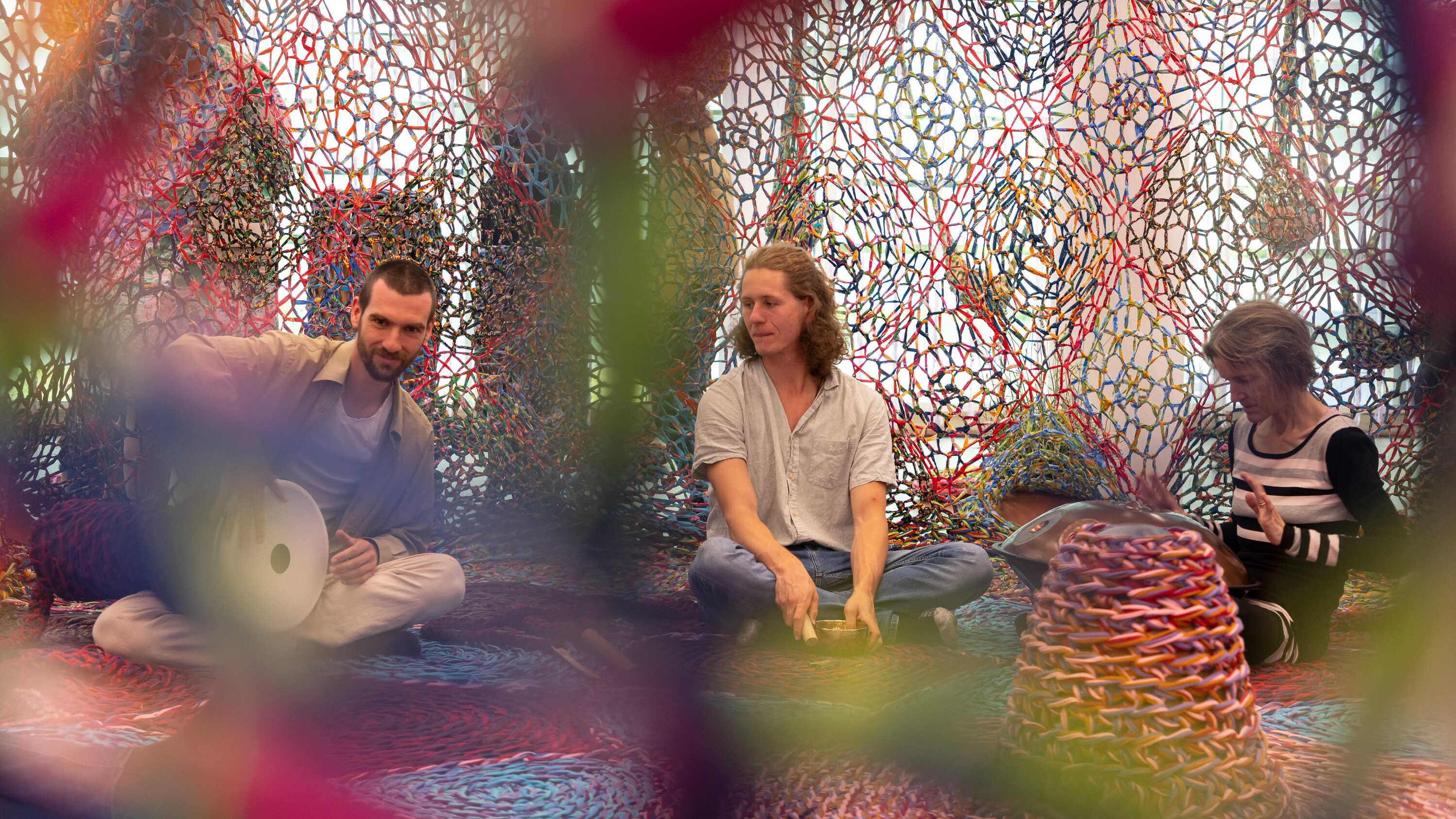Amid a world rapidly changing under the weight of climate change, the exhibition “I Feel the Earth Whisper” at the Museum Frieder Burda invites us to contemplate the fragile beauty of the natural world and our profound interconnectedness with it – through installations by Bianca Bondi, Julian Charrière, Sam Falls, and Ernesto Neto. Encompassing sculpture, painting, video, and photography in evocative scenarios, the show curated by Patricia Kamp and Jérôme Sans invites us to perceive ourselves as part of nature, its forests, and the unique ecosystems of our planet, encouraging us to reclaim our historically rooted role as respectful guardians of these vibrant habitats and to tell new, caring stories about our relationship with the Earth – true “planetary” love stories.

Uniquely united for the first time, the artists’ exhibited works draw our gaze to natural landscapes outside and invite the living world into the museum, creating engaging spaces that inspire us to consider more-than-human perspectives and awakening a deep sense of kinship with the animate Earth. Furthermore, the interaction of light and nature in the museum building, designed by renowned architect Richard Meier, blurs the boundaries between the outside and inside, creating a dynamic and immersive environment that challenges the traditional white-cube museum aesthetic.
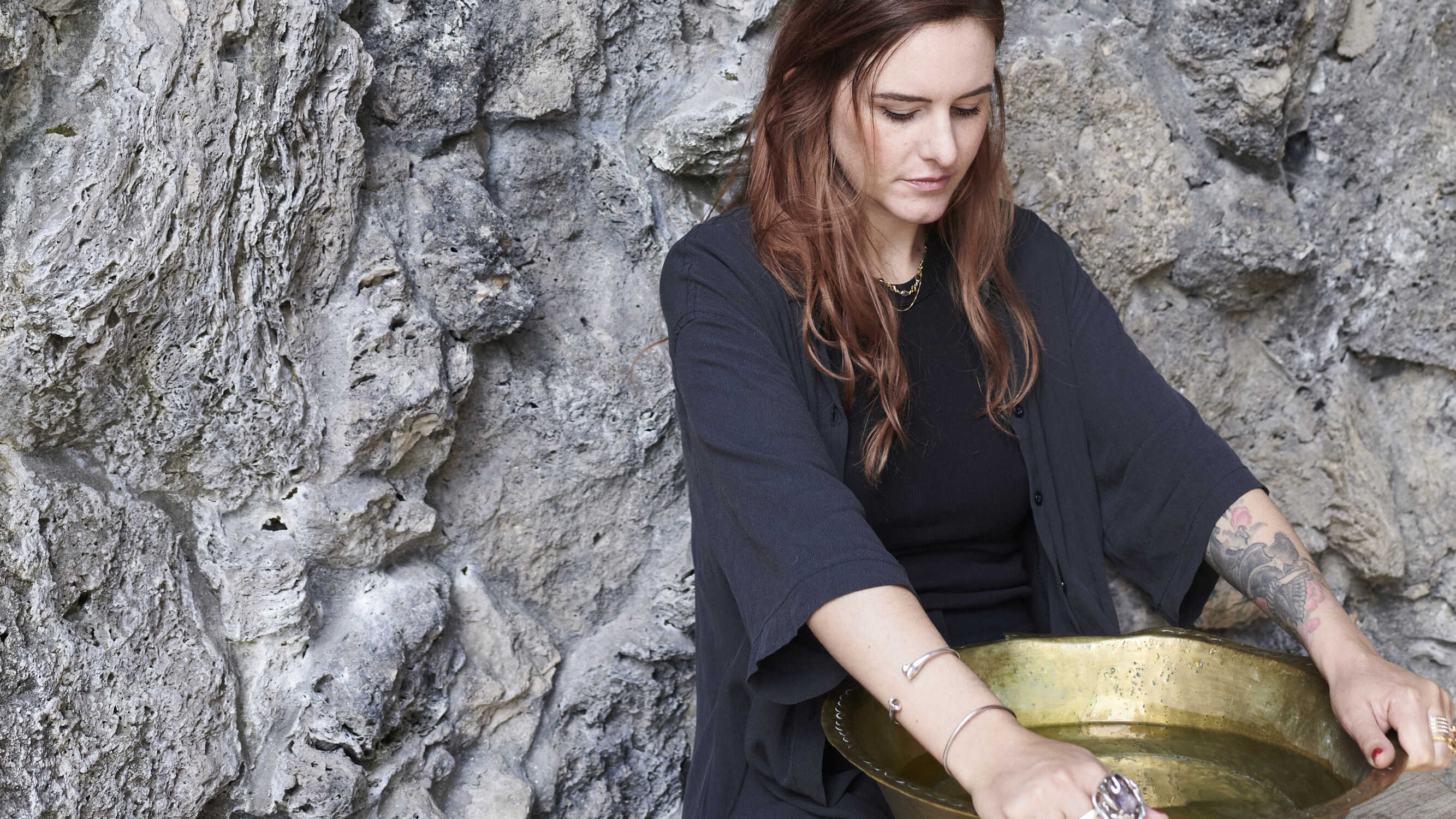
Bianca Bondi; Foto: Etienne Rougery-Herbaut
Bianca Bondi (*1986) is a South-African-Italian artist who lives and works in Paris. Multidisciplinary, her practice involves the activation or elevation of mundane objects through the use of chemical reactions, most often by salt water. The materials she works with are chosen for their potential for mutation or their intrinsic and symbolic properties. Her aim being to promote experiences beyond the visual and advocate the life of matter with an emphasis on inter-connectivity, transience, and the cycles of life and death. Passionate about ecology and the occult sciences, Bianca Bondi combines the two resulting in pluridisciplinary works of a transformative nature through which the aura of objects is key. Often location-specific, the poetic results are very much connected to the places in which they are to exist.
Bianca Bondi’s site-specific installation “Salt Kisses My Lichens Away” evokes mystical sagas from the Black Forest and the history of the Baden region. By blurring the borders between the outside and inside, the installation within Richard Meier’s architecture seems like a wild, breathing house in which tapestries and wallpaper coexist with moss, water, and plant life. These immersive environments challenge viewers’ perceptions and evoke a sense of the unseen or spiritual world.
Bondi’s dynamic installations evolve over time through chemical processes, highlighting themes of transformation and the passage of time, and serve as poignant reminders of our ecosystem’s fragile beauty and the necessity for a symbiotic relationship with our environment.
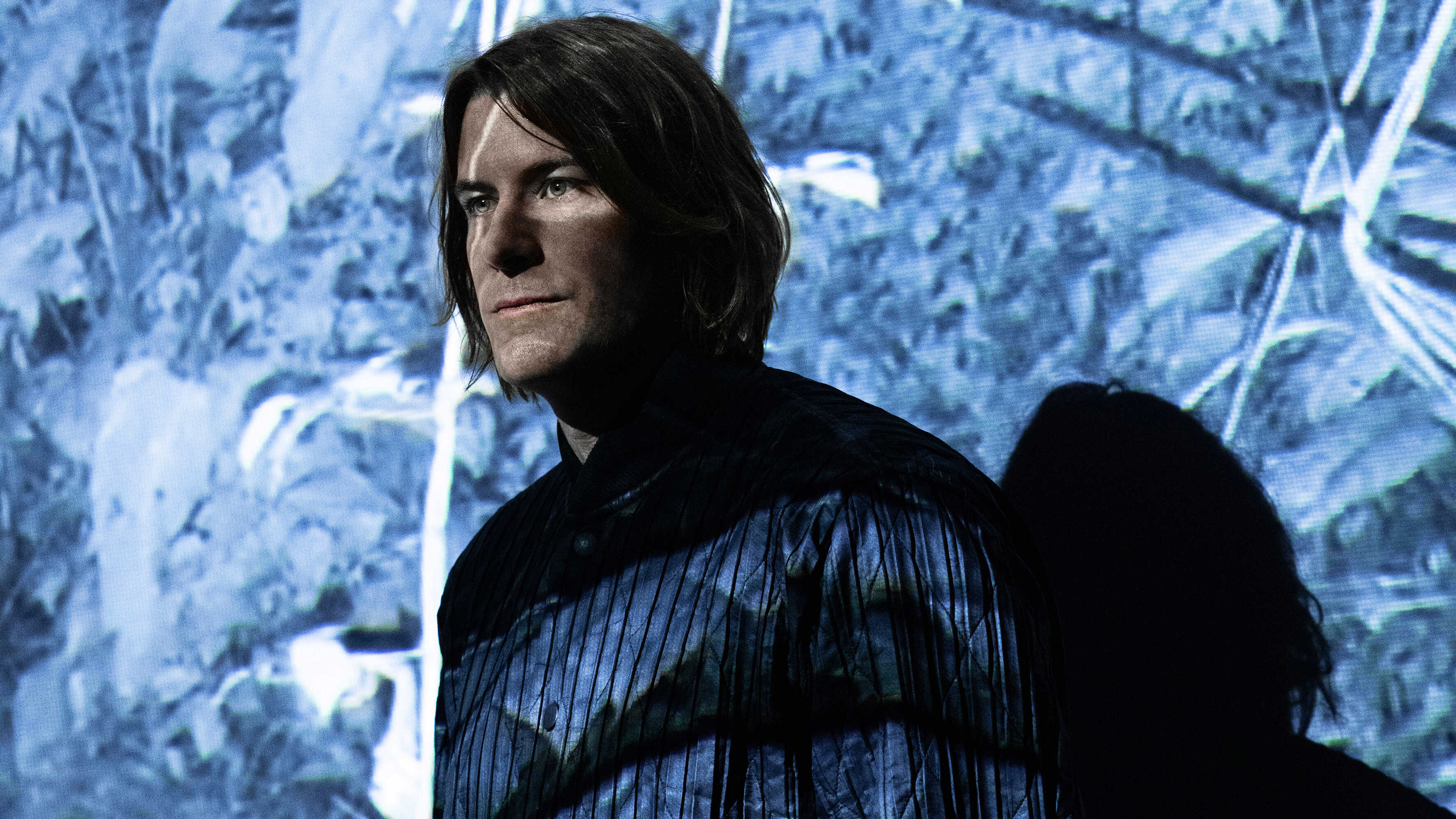
Julian Charrière; Foto: Etienne Rougery-Herbaut
Julian Charrière (*1987) is a French-Swiss artist based in Berlin. A seminal voice in Contemporary Art today, Charrière has been exhibited in esteemed institutions and museums around the globe. Marshalling performance, sculpture and photography, his projects often stem from remote fieldwork in liminal locations, such as volcanoes, ice fields and radioactive sites. By engaging with places where distinct geophysical identities have formed, Charrière speculates on alternative histories, often looking at materials through the lens of deep time. The artist frequently collaborates with composers, scientists, engineers, art historians, and philosophers.
In his exhibition “Where Clouds Become Smoke”, Julian Charrière presents a series of works that delve into the intricate entanglement of humanity and nature by exploring the enduring impact of human activities and invites visitors to reflect on their own role within our Earth’s ecosystem. Charrière’s new project, Calls for Action, combines a participatory art approach with land conservation, utilizing a live video connection between the Black Forest in Baden-Baden and a Coastal Forest in Ecuador to allow visitors to experience themselves as part of the interconnectedness of our planet and take meaningful action.
An integral part of Calls for Action is the opportunity for the public to directly contribute to the conservation efforts initiated by the Museum Frieder Burda and the artist, who have made a generous donation. This donation ensures the long-term preservation of the featured ecosystem in Ecuador. To learn more and participate in Calls for Action, please scan the QR-code inside the museum.
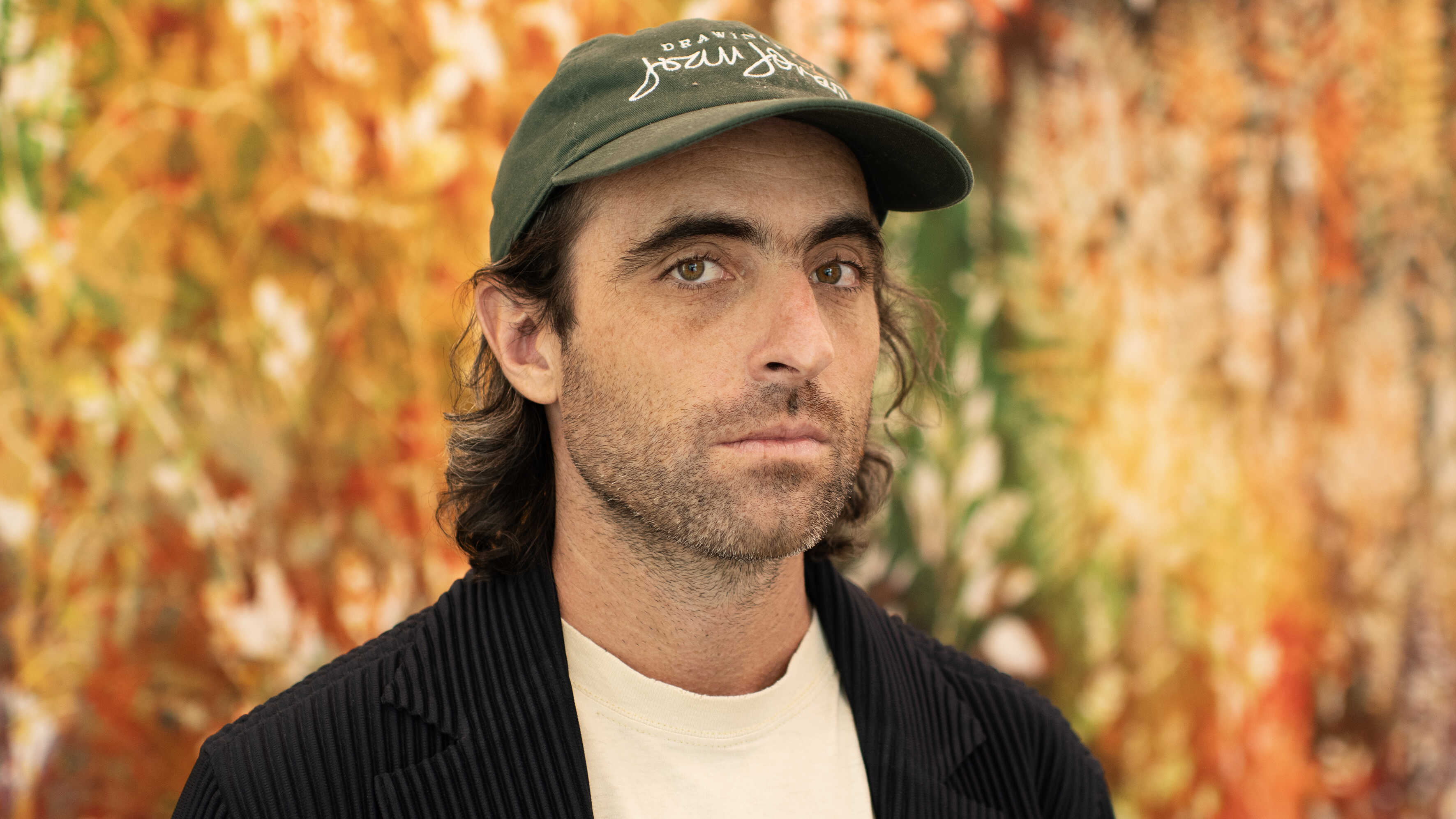
Sam Falls; Foto: Etienne Rougery-Herbaut
Sam Falls (*1984) grew up in Vermont and lives and works in the Hudson Valley, New York. The artist works closely with the fundamental principles of photography – namely time, representation, and exposure – to create works that bridge both the differences between various artistic media and the perceived separation between artist, object, and viewer. His often minimalistic approach reduces complex artistic genres and practices – ranging from modern dance to land art – to the fundamentals of nature. This empathetic blending of artistic genres reflects his reverence for art history and the transient nature of life.
Sam Falls’s exhibition “Waldeinsamkeit” brings together works made of therapeutic gemstones, ceramic works, cast glass, and various canvases. Conceived specifically for the Museum Frieder Burda, the artist created a site-specific work in the surrounding Black Forest, working with the forces of nature and the characteristic flora of Baden-Baden. Here, Falls captured natural processes of growth, decay, and regeneration by laying out a large canvas in the forest and placing found objects like flowers and branches on them, which over time left ghostly imprints as pigments reacted with elements like sun, rain, and time. This process highlights the transient beauty and impermanence of natural phenomena, drawing attention to the passage of time and the cycles of growth and decay, while also emphasizing the healing power of nature.
By working symbiotically with nature and its elements, his art embodies a profound sense of place, reflecting the unique environment of their creation while being imbued with a universal sense of mortality.
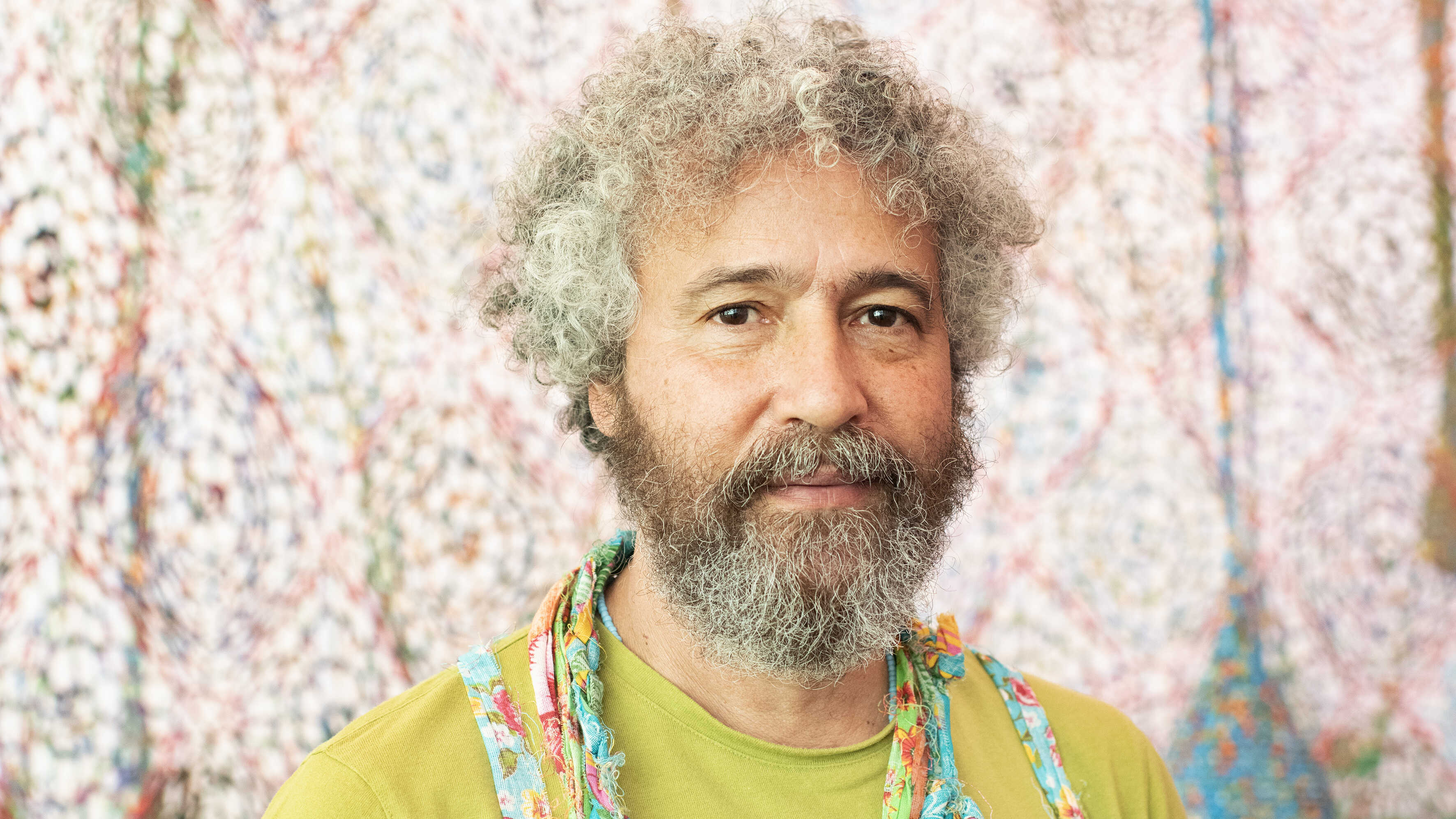
Ernesto Neto; Foto: Etienne Rougery-Herbaut
Ernesto Neto (*1964) is a Brazilian artist who lives and works in Rio de Janeiro. Among the most influential artists of his generation, Neto is known for his immersive environments of vibrant color, fragrance, sound, and natural materials that engage all the senses and foster a sense of community and shared experience among participants. Drawing on biomorphism, Arte Povera, Minimalist sculpture, Neo-concretism, and other Brazilian vanguard movements of the 1960s and 1970s, Neto has created a distinct body of work – an ongoing formal inquiry into space, volume, balance, and gravity informed by sensuality, energy, and spirituality.
While investigating the properties of the natural world, his work also functions as a model of the social environment, creating new architectural settings that explore scale and radically redefine the boundaries between the artwork and the viewer. In his exhibition “The Birth of Contemporous Blue Tree”, Neto evokes a space of harmony and healing with a monumental tree structure made of hand-crocheted Brazilian cotton fabrics, specifically conceived for the architectural setting of the Museum Frieder Burda. The tree, symbolizing the union between earth and sky, is adorned with plants, aromatic herbs, spices, and musical instruments. Enveloped by a 13-meter-high fabric “rain”, the installation serves as both a sanctuary and a playground, inviting visitors to engage through touch, smell, and sound or lie down, sing, dance, meditate, and breathe in the energy and beauty of feeling vibrantly alive.
Neto draws inspiration from a wide range of sources, from Brazilian avant-garde artists such as Hélio Oiticica and Lygia Clark, through the Modernist abstraction of Alexander Calder and Constantin Brancusi, to the natural world, shamanism, and craft culture.
As the Museum Frieder Burda – build by Pritzker Prize-winning architect Richard Meier – commemorates its twentieth anniversary, I Feel the Earth Whisper pays tribute to the visionary spirit and enduring legacy of its founder, Frieder Burda as a passionate and dedicated collector of contemporary art. Connected to the greatest minds and creators of his generation, the German collector built his museum on a human scale. The museum, nestled within the picturesque park Lichtentaler Allee, part of the UNES-CO World Heritage, features light-filled spaces that create a harmonious symbiosis between art, architecture, and the breathtaking, contemplative natural surroundings. Situated near the borders of France and Switzerland, the museum is situated within the enigmatic Black Forest, a region rich with legends and spiritual resonance.
As a response to the museum’s unique history and positioning in Baden-Baden, a town steeped in the tradition of providing healing and restoration with its mineral-rich thermal waters and historical bathhouses, the exhibition explores concepts of healing on multiple levels – physical, emotional, and environmental – calling for environmental guardianship and inspiring a harmonious relationship with ourselves and the Earth.

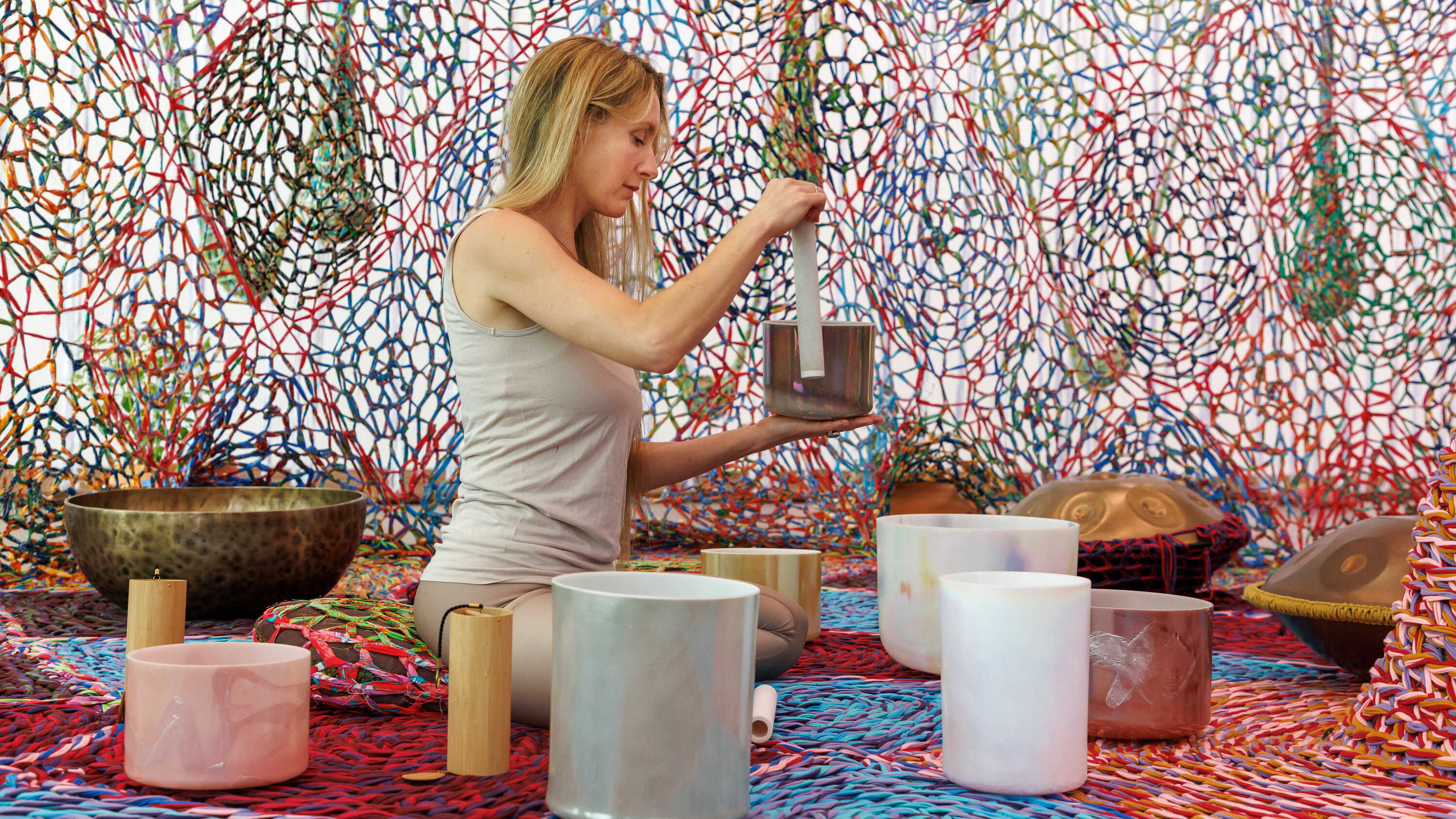
A varied accompanying program expands the museum space and the conventional exhibition practice and invites you to experience nature and community, body and mind in a new way. Whether extraordinary yoga and sound healing experiences, handpan workshops, combined special tours in the museum and the Black Forest or creative courses in the Kunstwerkstatt: The varied wellbeing program makes the themes of the exhibition tangible with all the senses and enables a precious moment of peace.
